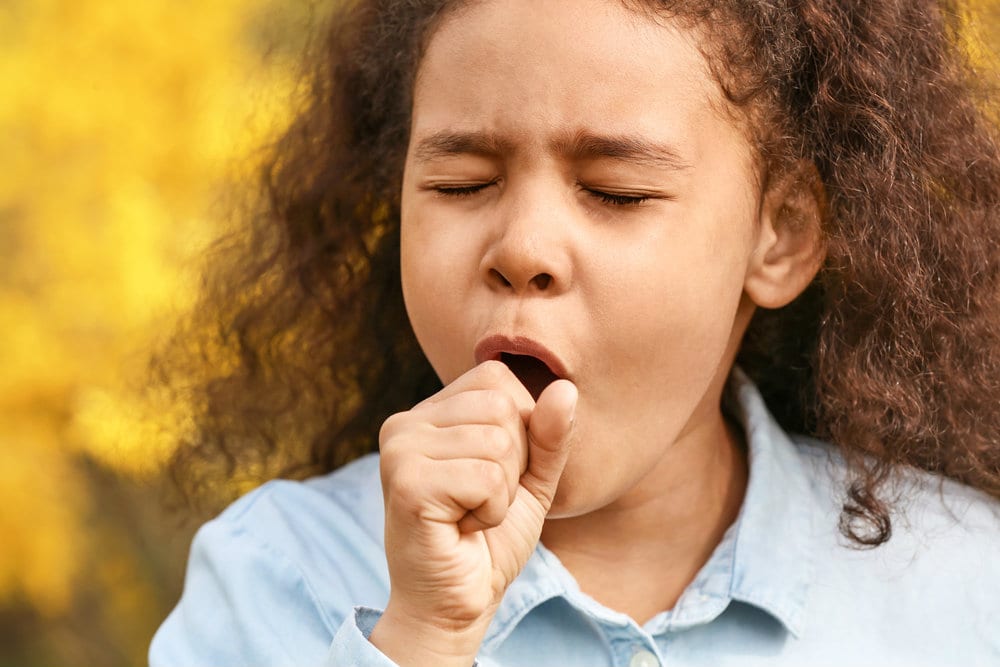Experts are sounding the alarm on a resurgence of whooping cough outbreaks across Europe, Asia, and various regions of the United States, emphasizing the critical importance of vaccination.
In the United Kingdom and Europe, cases of whooping cough have surged dramatically since January, marking the most significant uptick since 2012. Similarly, China has reported a staggering increase, with over 15,000 cases documented in January alone, representing a 15-fold rise compared to the previous year. Closer to home, small clusters of cases have emerged among high school students in the San Francisco Bay Area, along with isolated instances in Hawaii. New York City experienced its own outbreak from October to early this year, with over 200 cases predominantly affecting young children.
The resurgence of whooping cough, caused by the Bordetella pertussis bacterium, shows the highly contagious nature of the respiratory illness, which spreads through small respiratory droplets. While widespread vaccination has helped control the disease in the United States, breakthrough cases, typically mild, can occur even in vaccinated individuals.
Jasmine Reed, a spokesperson for the Centers for Disease Control and Prevention (CDC), notes that while some local outbreaks have been reported in the U.S., such occurrences are anticipated annually, with no significant deviation from expected trends.
Despite the recent uptick in cases, the current incidence of whooping cough in the United States remains below pre-pandemic levels. Normally, around 20,000 cases are reported each year, with a notable peak of nearly 50,000 cases during the 2012 outbreak, as per CDC data.
The pandemic’s impact on respiratory illnesses has been profound, with steep declines observed in annual whooping cough cases during 2020 and 2021. The implementation of masking and physical distancing measures disrupted the typical transmission patterns of various respiratory viruses, including the common cold, respiratory syncytial virus (RSV), and influenza.
Dr. Thomas Murray, a pediatric infectious disease expert at the Yale School of Medicine, highlights how pandemic-related disruptions may have influenced vaccination patterns, potentially contributing to the interruption of pertussis transmission cycles.
RELATED: Microorganisms Found in the Human Body
Warning Signs for Babies
Whooping cough, characterized by cough seizures that severely hinder breathing, poses a significant health threat, particularly to infants and young children, warns Dr. William Schaffner, an infectious diseases expert at Vanderbilt University School of Medicine.
In adults and children, the symptoms of whooping cough often resemble those of a common cold, including a runny nose and persistent cough. However, in infants, the infection can lead to more severe complications.
Pertussis, the bacterium responsible for whooping cough, inflames the bronchial tubes of young babies, making breathing challenging. The most prevalent complication of the infection is pneumonia, which can be fatal. According to the CDC, between 2000 and 2017, there were 307 reported deaths attributed to pertussis, with nearly 85% occurring in infants younger than 2 months.

Dr. Thomas Murray, emphasizing the severity of the disease in newborns, notes that while it’s commonly referred to as whooping cough, infants may not exhibit the characteristic cough; instead, they may experience episodes where they momentarily stop breathing. Murray advises parents to be cautious about exposing their newborns to anyone who is sick, and to promptly notify their pediatrician if their baby develops a fever above 100.4 degrees Fahrenheit.
If a baby displays signs such as bluish lips or abnormal breathing patterns, especially after exposure to a sick individual, Murray stresses the importance of seeking medical attention promptly.
To prevent whooping cough, the CDC recommends initiating the DTaP vaccine series at 2 months of age, which protects against diphtheria, tetanus, and pertussis. The series comprises five doses administered at 2, 4, and 6 months, 15 to 18 months, and 4 to 6 years of age.
Schaffner expresses concern about the potential impact of the COVID-19 pandemic on routine childhood vaccinations, as many children were unable to receive timely immunizations. Healthcare providers are now striving to catch up on missed vaccinations.
The DTaP vaccine, tailored to stimulate an immune response in infants with developing immune systems, boasts approximately 98% effectiveness in preventing pertussis within the first year following completion of the five-dose series, according to the CDC.
Teenages and Adults may need a Booster
The CDC recommends the Tdap vaccine for individuals aged 11 and above, as well as adults who may require a booster. While DTaP cannot be administered to children older than 7, the Tdap booster is suitable for individuals who have not completed their initial DTaP series, according to CDC guidelines.
Jasmine Reed from the CDC emphasizes the importance of adult vaccination, highlighting the need for a Tdap dose followed by either a Td or Tdap vaccine every 10 years due to the diminishing effectiveness of vaccination over time.
Vaccinating adults not only safeguards against whooping cough but also mitigates the severity of the illness if vaccinated individuals contract it. However, adherence to adult vaccination recommendations falls short of optimal levels, leaving older individuals vulnerable to whooping cough, remarks Dr. William Schaffner.
While whooping cough can pose risks to older adults, the primary concern is the potential transmission of the bacterium to unvaccinated newborns. Schaffner underscores the importance of ensuring that anyone visiting a newborn has received a recent Tdap vaccine to create a protective barrier around the infant.
For pregnant women, the CDC advises receiving a Tdap booster with each pregnancy. The American College of Obstetricians and Gynecologists further recommends vaccination with Tdap during the third trimester, a measure shown to prevent approximately 78% of pertussis cases and 90% of pertussis hospitalizations in infants under 2 months old, according to the CDC.
